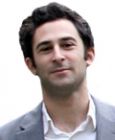The Headcase has a piece in today's Los Angeles Times about efforts to improve public health by manipulating our social circles:
The old folk concept that our personal health behaviors rub off on those around us has received a staggering amount of scientific support of late. Over the last few years, study after study has shown that weight gain, drug and alcohol use, even loneliness and depression aren't islands unto themselves but are powerfully contagious — capable of spreading within our social networks just as germs scatter after a sneeze.
A lot has been written about the way health behaviors travel through our social networks in the past year. (By "networks," social scientists simply mean our social circles, like neighborhoods, offices, classrooms, or even Facebook communities.) Clive Thompson covered the topic at length for the New York Times Magazine, Jonah Lehrer did the same for Wired, and Nicholas Christakis and James Fowler—the field's leading scholars—wrote the book on it: Connected.
Far less has been written about how this research might actually lead to healthier lives. As Christakis explained to me, public health programs could take advantage of social networks to treat problems like obesity, drug abuse, and depression. The most promising approach is to identify key members of social groups, teach them a particular health intervention, and let the new behavior cascade through the social network naturally.
This approach, in the parlance of social network researchers, is known as manipulating the "contagion." So far it remains to be seen how well it can work. I describe some of the most interesting attempts—made by Thomas Valente of USC—in the piece (I've added links to the relevant studies here that aren't found at the Times site):
In a study published in 2003 in the American Journal of Public Health, led by USC professor of preventive medicine Thomas Valente, sixth-graders participated in an eight-week smoking-prevention program. The intervention was taught to groups of students (the "networks," in this case) by class-nominated peers, teacher-nominated peers or random peers. All told, class-nominated peer leaders conducted the program most effectively, with students in these networks reporting less intention to smoke and lower smoking rates one year later.
But a follow-up study, also led by Valente, had less success. This time, Southern California high schoolers took part in a 12-lesson drug-abuse intervention. The program had a greater effect on health behavior when led by an influential, student-nominated peer than when led by a teacher — but with a caveat. Drug use declined only in relatively drug-free social circles; for those whose friends included drug users, the program actually elevated drug use, the researchers reported in the journal Addiction in 2007.
The mixed findings suggest to Valente, who's done some of the leading work on network-based health interventions, that programs may need different designs based on the type of social network they're intended to help. This important point, he adds, has been entirely ignored in all work on health promotion.
"You can't divorce the content of the program from the people delivering it," he says. "The message is really the messenger."
This concept was writ large in Gladwell's Tipping Point, and as digital media promises to continue connecting lives, I imagine it will only grow larger. Whether we tip these social points toward the public good, or simply join the avalanche where it will, remains to be seen. As Olga Yakusheva of Marquette put it to me:
"An easy thing to say would be 'Choose your friends wisely.' I'd like to say, 'Choose your behaviors wisely,' because they're going to impact people around you."
--
Follow me on twitter: e_jaffe


